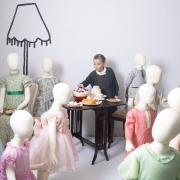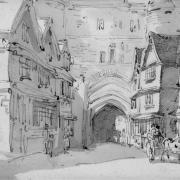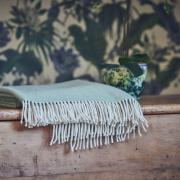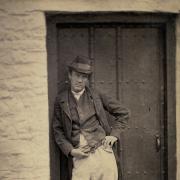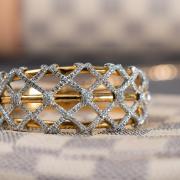Pets come in all shapes and sizes. Many of us harboured a childhood dream of having our own pony but probably lacked that vital all-consuming passion to rise at the crack of dawn every single day in every possible weather to feed, lift, shift and shovel manure before returning at dusk to do it all over again.
Many people keep horses and ponies for riding and equestrian activities, but a large proportion choose not to ride them. They are herd animals and much calmer in the company of fellow equines, so are commonly kept as animal companions. Some people take on project ponies that need extra care and attention but bring a massive sense of achievement and connection. Some give homes to retired or elderly horses and treasure them for the joy and comfort they bring. And some ponies are incredible educators. They help build confidence in children, who learn responsibility and empathy through caring for them.
Spending time in equine company can help us recognise their power to heal us mentally and physically. These beautiful, sentient animals, each with a unique character, can teach us so much about living in the moment.

The Mare and Foal Sanctuary is a charity which celebrates the difference horses and ponies make to people’s lives. It works across the South West and its HQ is at Newton Abbot. It has rescued more than 1,000 equines and given them lifelong, life changing, loving care and support.
The sanctuary offers people valuable time with the animals through assisted learning sessions, open days and special events. It gives non-judgemental advice and support for equine owners, and runs a special rehoming scheme for rescued ponies - like Crumpet.
Crumpet is a 14-year-old Moorland Skewbald gelding who is looked after by Eleanor Manning, one of the charity’s Sanctuary at Home carers.
‘I was looking for a long time for a suitable companion for my horse Charlie and then saw Crumpet on the sanctuary’s website,’ she says.

‘He ticked all of our boxes. He was the cutest little fluff ball I'd ever seen! He took a few days to settle into his new home, but it didn't take long and he's now the perfect companion. He loves a good fuss and a scratch and is always pleased to see us - he's such a character.
‘When the ground is dry enough for him to be turned out, I put his headcollar on and he very politely walks down to the field doing little squeals of excitement at the impending freedom. We get to the gate and his headcollar comes off and he's like a rocket. You know when dogs get ‘zoomies’? So funny! Charlie just watches in amazement.

‘My young nephews love Crumpet and are always talking about him. Crumpet is such a gentle boy that I feel very confident with him around little people. I'm secretly hoping the boys will get into horses and Crumpet is doing a great job of encouraging them.’
Crumpet was guest of honour at a special family occasion.
‘When my now husband, Luke and I were planning our wedding I liked the thought of having the ponies involved but wasn't sure how practical it would be,’ says Eleanor.
‘My friends very kindly took care of it. On our wedding day the ponies were waiting outside the church after the ceremony looking sparklingly clean with smiles on their faces.
‘It was such a joy to have them there and our guests thought it was wonderful.
‘Crumpet didn't actually recognise me out of my scruffy clothes and wellies and was a little unsure about my wedding dress, but once he knew it was me, he was quite happy. It was a struggle for him not to eat my delicious looking bouquet!
‘I was so glad Charlie and Crumpet came to our wedding because they are our family members and hold a very special place in our lives.’

A galloping price tag
For anyone serious about keeping equines, cash has to be a key consideration.
A cost-of-living survey conducted by the National Equine Welfare Council last year found that 90 per cent of owners have experienced increases in the price of horse feed, forage, bedding and fuel, with the biggest ongoing concerns around the price of feed, forage and veterinary care.
The Mare and Foal Sanctuary can help Sanctuary at Home carers with some of the medical costs for eligible equines through its Prime Pastures scheme and gives all carers the peace of mind that if their circumstances change, the charity provides sanctuary for life.
Horses can live for more than 30 years, so many home carers in their later years don’t feel able to commit to a long-term project.
Average basic costs:
Livery: all costs are dependent on type (field or stable, DIY, part or full), facilities and location. Local research is recommended.
Feed: dependent on equine’s needs. Expected range: £50 - £100 per month.
Routine veterinary and dentistry care: dependent on equine’s health. Recommended budget: £50 - £100 per month.
Farrier services: anticipated cost £30 - £100 every 6-8 weeks.
Other potential associated costs:
Insurance, training costs, equine club or competition fees, grooming products, tack, rugs, transport.

Ponies in need
The sanctuary’s Welfare Outreach and Advice team has seen first-hand how the cost-of-living crisis has had a damaging impact on the welfare and quality of care for many animals.
In one recent case, it found ponies Robin and Daisy huddled together on a small, raised mound in a saturated field, trying to keep out of the worst of the thick mud. They had little food and no shelter, and their living conditions were hazardous. They had painful hoof and skin conditions and were unable to move around freely or even lie down to sleep. The sanctuary worked with Robin and Daisy’s owner to take them to safety and give them the specialist care, patience and rehabilitation they needed.
Since then, both ponies have seen significant improvements in their health and confidence, and it’s hoped they’ll soon find happy homes with new Sanctuary at Home carers.
Adopt a star
The cost of keeping a horse is beyond most of our budgets, but there’s another way to feel a part of a pony’s life and upkeep.
Two of the sanctuary’s best known equine stars are Sir Didymus and Vogue. Supporters adopt them for as little as £2.50 a month, helping to sustain the charity’s work. They get regular updates on their pony’s progress and can visit them on any of the charity’s free open days.
But what does it take to care for a pony, or a horse like them?

Sir Didymus
Colour and breed: Chestnut Miniature Shetland (gelding).
Age: 9
Height: 7.3hh
Food: Soaked hay and grass
Bedding: Miscanthus bedding
Accommodation: Out in the field and he comes in each day to a stable 10ft by 10ft
Companionship: Didy lives with his two friends Ludo and Geronimo
Medical and care needs: Farrier for feet trimming every six weeks; vaccinations yearly, dental work every six months, balancer twice a day with vitamins and minerals

Vogue
Colour and breed: Dapple-grey Irish Draft cross (mare).
Age: 13
Height: 15.3hh
Food: dry hay and grass
Bedding: shavings
Accommodation: Vogue is out in the field as much as possible but comes in three to four times a week to a stable 12ft by 12ft
Companionship: Out with her friend Karma in the field
Medical and care needs: Front feet shod every five weeks; vaccinations yearly; dental work every nine months; balancer twice a day with vitamins and minerals
Find out more about the charity’s rescue and welfare work, its adoption ponies and all the equines currently available for rehoming at mareandfoal.org






